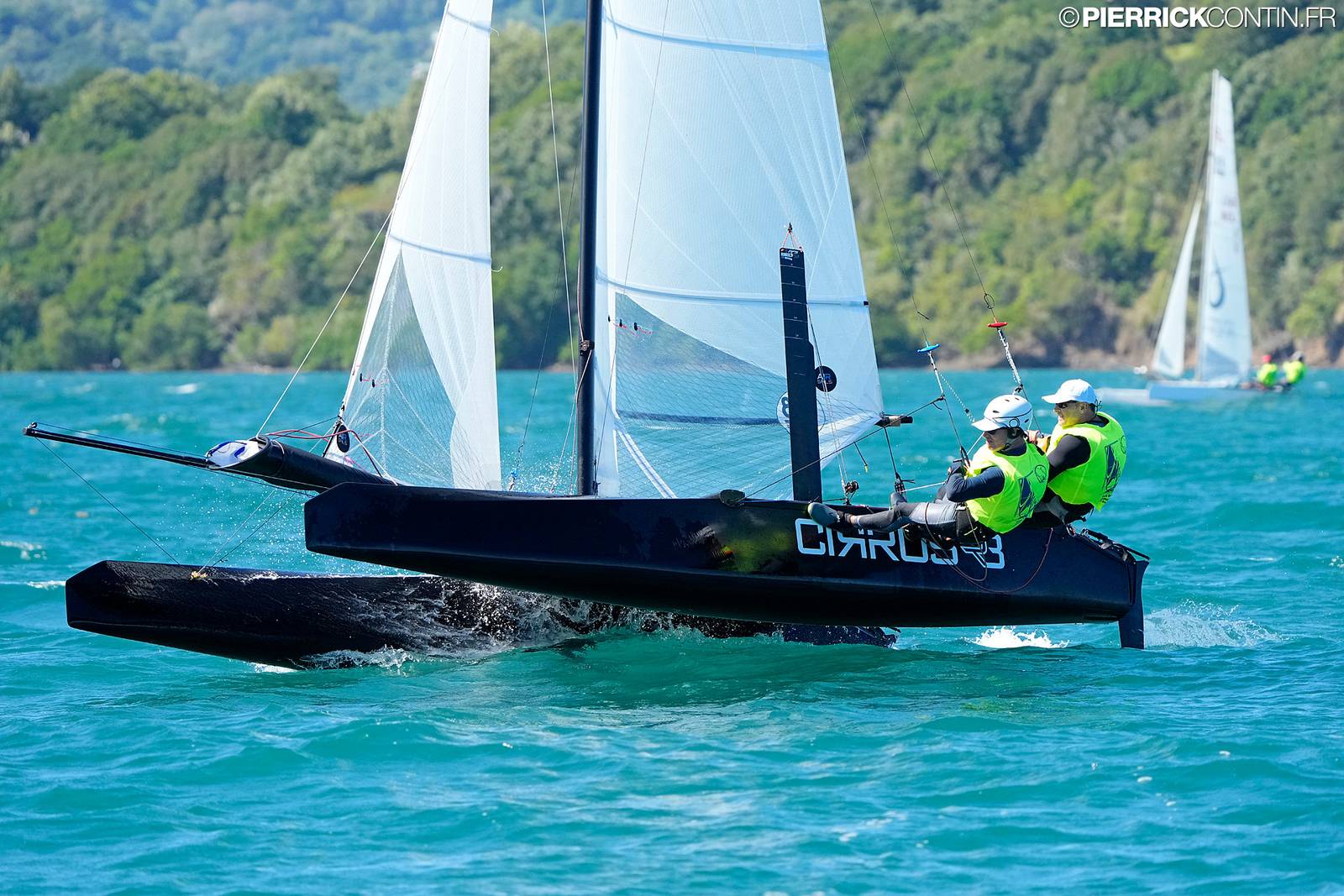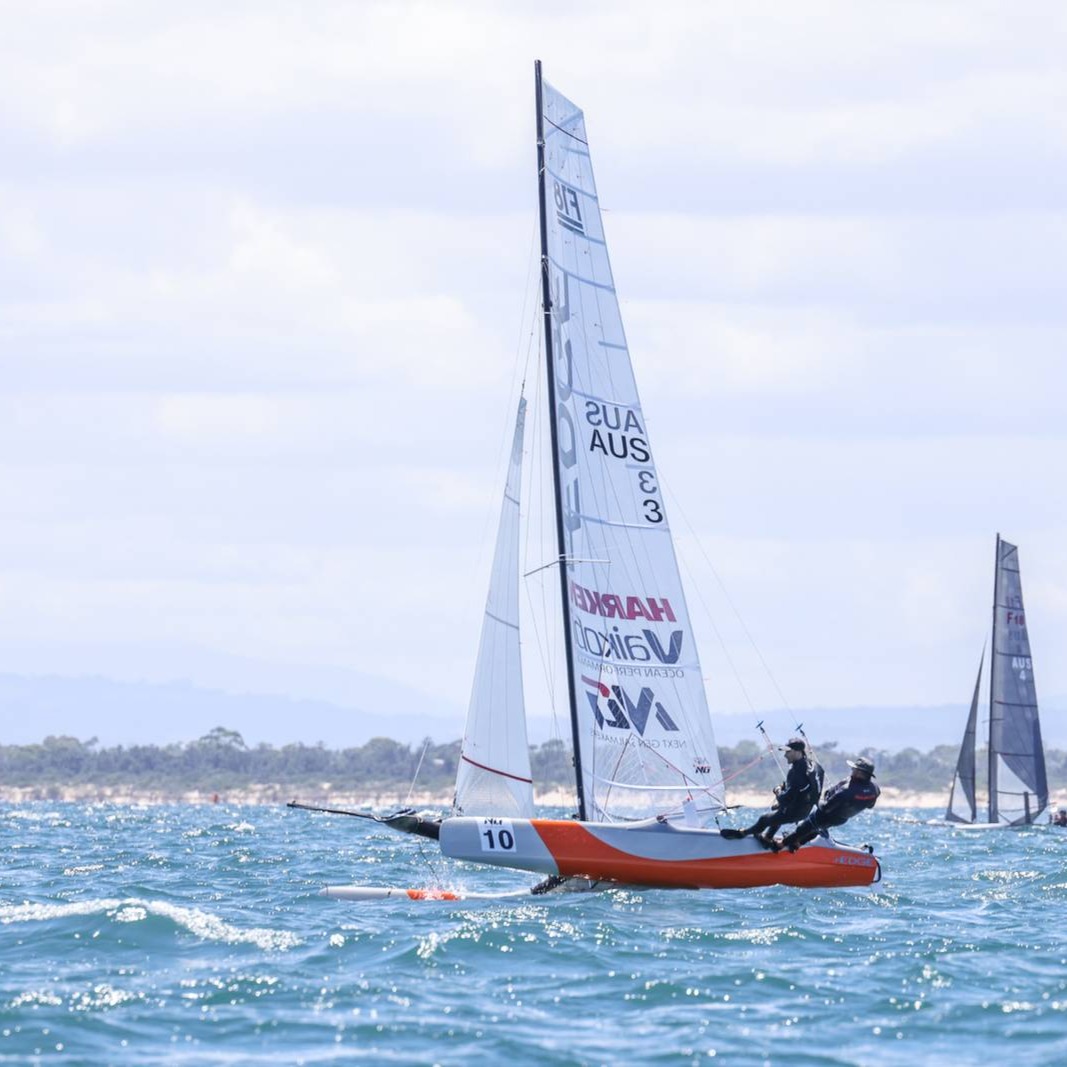Ngalawa Cup 2017

 The Ngalawa Cup is hardcore sailing, racing and adventure at its best .Check race desription: “Bollocks to boring modern yachts with their auto-pilots and comfy cabins. For a proper ocean adventure vessel you need to go back a few hundred years.
The Ngalawa Cup is hardcore sailing, racing and adventure at its best .Check race desription: “Bollocks to boring modern yachts with their auto-pilots and comfy cabins. For a proper ocean adventure vessel you need to go back a few hundred years.
Take a dugout canoe made from a mango tree, add a bamboo mast, a sail and a couple of outriggers and you have the Ngalawa – the ultimate sailing machine. Line up against a fleet of like-minded idiots and point it towards the Indian Ocean racecourse of spice islands, deserted beaches and sand banks off the coast of Tanzania. Welcome to the world’s greatest sailing race.”
They surely do not have the foiling bottom panel but they dare to add a touch of sail tech? Check first pics ‘Decksweeper’ mainsail.
Report & pics sent by David Ferguson, more info the Ngalawa Cup at theadventurists.com/ –
—————————————
Ngalawa Cup January 2017 Race Report
They capsized, snapped masts, got stuck in currents so strong they were pushed backwards, and faced the very real prospect of sun-stroke and dehydration sailing up to 12 hours a day.
Luckily the seven teams who raced in January’s Ngalawa Cup were ready for all of it. Almost.
Here’s what went down…
The week-long race kicked off on New Year’s Eve from Nungwi on the northern tip of Zanzibar. The 450km course took the teams south, following the Kaskazi trade winds via a series of checkpoints on islands off the coast of Tanzania to the finish line in Kilwa.
The first three days of racing took the teams down the coast of Zanzibar and across open water to the mainland south of Dar es Salaam.
South Africans Ryan and Clinton (Team Breaking Wind) weren’t winning the race but streaked ahead of everyone on the disaster front. Clinton injured his wrist, later finding out it was a full on fracture, and Ryan had been vomiting and losing consciousness intermittently; most likely caused by dehydration or sun stroke.
Helpfully the gods of adventure also gave them the gift of capsizing and having to right a slightly sunken boat just when they least needed it.
Clinton, a former professional kiteboarder, was forced to withdraw and Ryan had a bloody good case for an honourable discharge, but he joined up with British pair Julian and Jonty (Team Devil’s Own) and soldiered on.
Ryan’s adopted team Devil’s Own were well ahead by this point, leading the pack by over four hours. The Leaderboard is calculated using actual sailing times between checkpoints and they were looking almost unbeatable. But the Ngalawa Cup is a rather unpredictable beast and there was trouble ahead for the leaders.
On the fourth day of racing one team who will remain un-named messaged Race HQ saying they’d had enough, they were quitting the race. Another team capsized and couldn’t bail out and had to be towed to land by one of the Race Boats. Both bounced back and carried on racing.
In among the chaos, there was also plenty of stunning sailing, impressive speeds and mastery of the genuinely tricky ngalawas. Experienced sailors were being pushed by the traditional vessels with no winches, fibreglass or auto-pilots to rely on and enjoying the gob-smackingly impressive Tanzanian scenery.
The southern section of the race takes the teams from island to island but for Juri and Juliane from Switzerland (Team Bayasgalant), the picturesque sailing was punctured by an impressive capsize on day four.
At the very end of the racing day and just a few hundred metres from Kwale Island where they would moor up overnight they not only went over but managed to get their mast stuck in the mud. The recovery was described aptly as ‘hectic’ but the mast was successfully replaced.
Tanzania is an incredibly friendly place, but crime occurs in every country. Americans Matt, Marlin and Cole (Team Papachambo) were unlucky – almost all their bags got stolen overnight. Instead of giving up however, they hit the fifth day of the race as hard as ever, even without most of their kit and luggage.
Moving towards the sharp end of the race British pair Julian and Jonty (Team Devil’s Own), with their adopted teammate Ryan who had recovered well, were even further ahead and looking like nailed-on race winners. They were 6 hours ahead of the next team, the Swiss Juri and Juliane (Team Bayasgalant) and approaching the finish line…
Their boom snapped. A brutal blow on its own but it got worse. Ryan explains:
“We got caught out on the reef, we were stuck for hours and hours. We ended up pushing the boat around the reef. It was brutal, the water was waist high, your legs start cramping and we had a broken sail.
We jimmy-rigged the sail that got us to move and limped the last three miles, holding the sails out ourselves and paddling the last mile into the wind. It took us about an hour to paddle it to shore, we were absolutely destroyed. It was the hardest thing we did. We got in at 11.45 at night.”
A red-line rule of the Ngalawa Cup is no sailing after the course is closed and absolutely no sailing after dark. Julian, Jonty and Ryan may have been the fastest team by a hefty margin but rules are rules and they had to wait for the Race Committee to decide their fate. Because they were caught on the reef and it was unsafe to stop for the night, they avoided disqualification on the grounds of safety – walking and dragging their boat to the finish line was a sensible, albeit dangerous and morale-battering move.
They were still heavily penalised for sailing after dark, cruelly pushing them back into second place and awarding the Swiss a shock win on the final day.
Race winner Juri said “We didn’t expect to win. We had a fast boat, but there were teams with better tactics. We didn’t push it too much. We were the last boat into the finishing line.”
Despite losing out on first place, Ryan, who seemed to have had the most eventful race of the fleet pointed out the cosmetic benefits that every hardcore adventurer looks for in a race: “Between the water and the sand, it shaves a layer of skin off. I feel thoroughly exfoliated.”
Next time: the race heads from south to north, starting in Kilwa, on the 27th of June, and finishing on Zanzibar Island. Sign up is open now on The Adventurists website – www.theadventurists.com/ngalawa-cup-the-what
QUOTES FROM THE TEAMS:
“It is so beautiful, to experience the culture and the way they live. You get to an island, say Kwale, we got there – it’s tiny, 800 people live there. They have a little downtown. It’s a billiard table under a roof of coconut leaves and a handful of shops. The way they live it’s amazing, it’s such a slow life – it was so great for us to experience. I live in Europe where it’s such a fast paced world. We have no time to enjoy life like these guys. When we got there they stopped working and came round to talk to us. “
Dylan, Team Bayasgalant
“The boats aren’t identical. Each boat had a character, and I can say that because I have been in three teams. Some are more stable, some are faster, some are prone to capsizing – the challenge was to master that. It was quite awesome. Seeing these boats which haven’t been modified for hundreds of years. It’s quite amazing that we can still get on one of those and do 500kms with them. To sail with them it was a really unique experience.”
Dylan, Team Bayasgalant
“I got at least one blister on each finger. Usually, you have the luxury of modern winches, on these boats, it’s all your hands and your sweat. And crazy tan lines.”
Marco, Knotty Ngalawas
“My hands are so much darker than the rest of my body. I look like I dipped my hands in paint and just pulled them out. My teammate Liz got sunburnt. She put a camping towel on her legs, and one day it fell just short.”
———————































I just heard that my great sailing friend and former CEO of Hobiecat Europe has passed. May The endless oceans…
...Report was sent by an F18 Sailor, if you want Hobies reported send your own, we'll publish as usual. Cheers.
Looks like in your report the Hobies are not really present. Suggest to rewrite the article.
Thanks for the great report Wik. Great battle.
If I correctly read the results the overall winner this year is a Hobie16